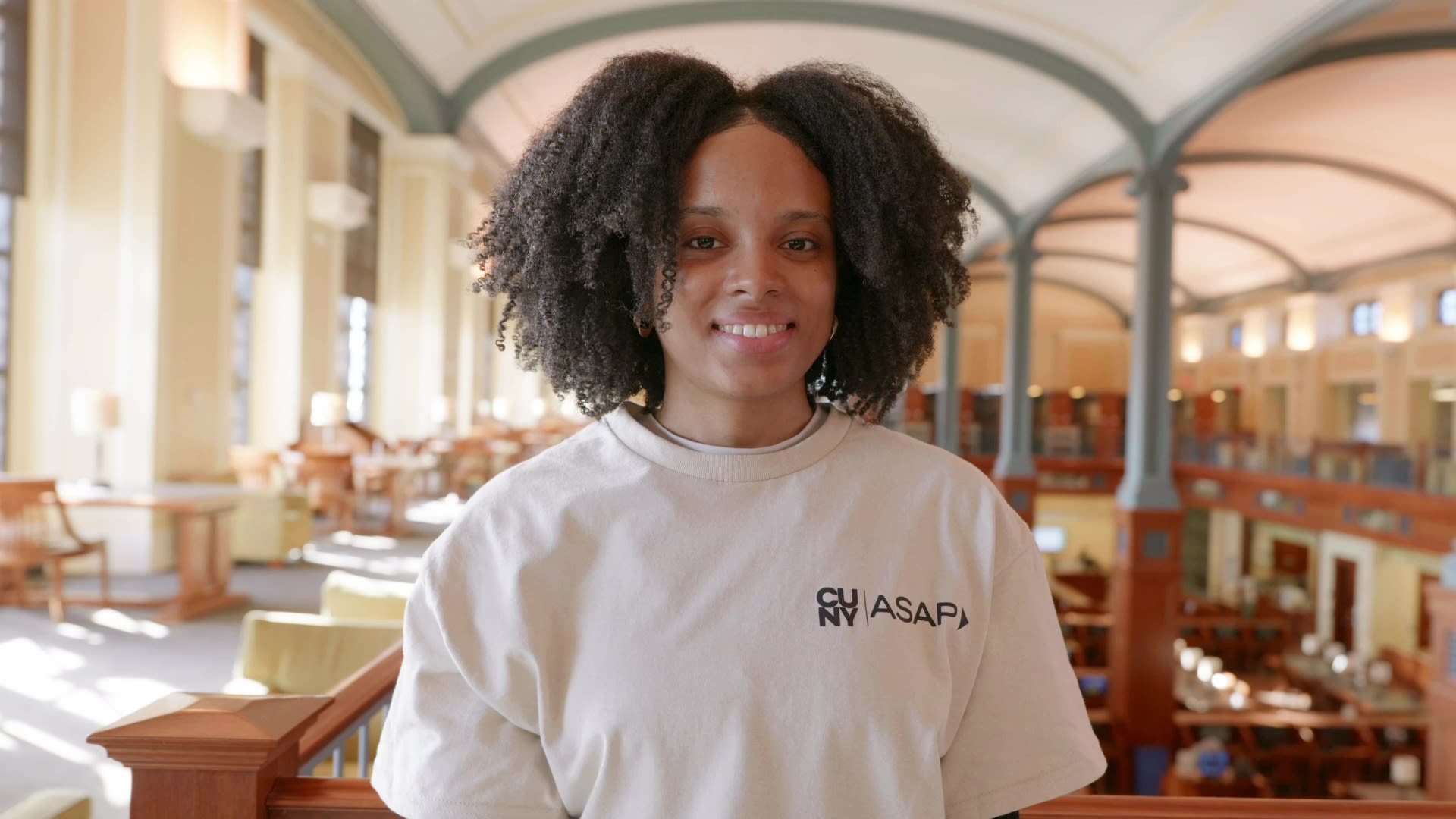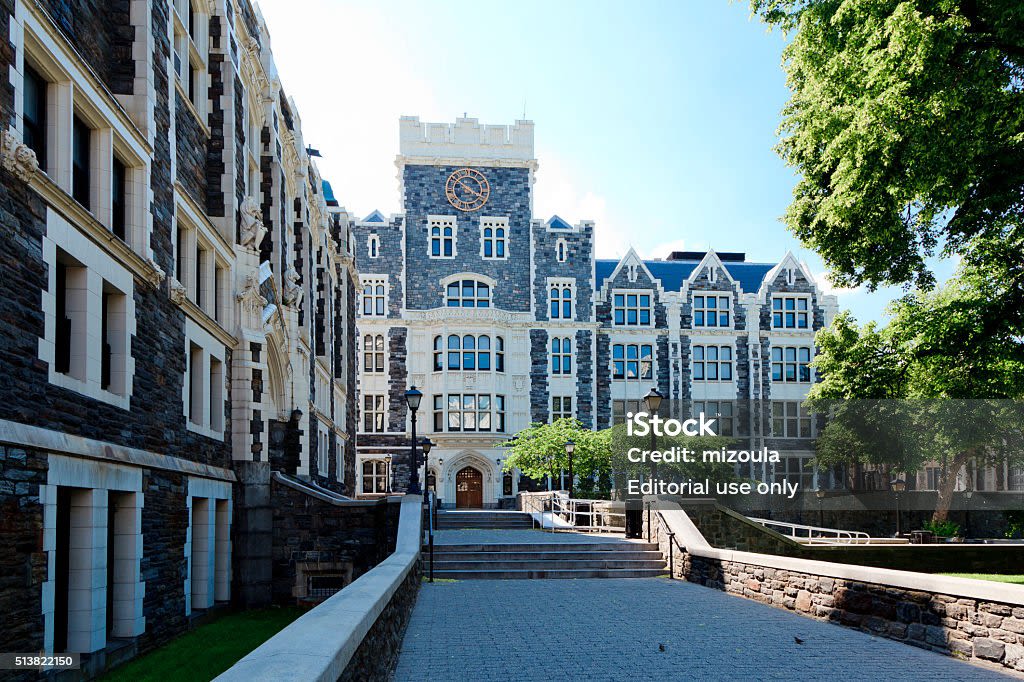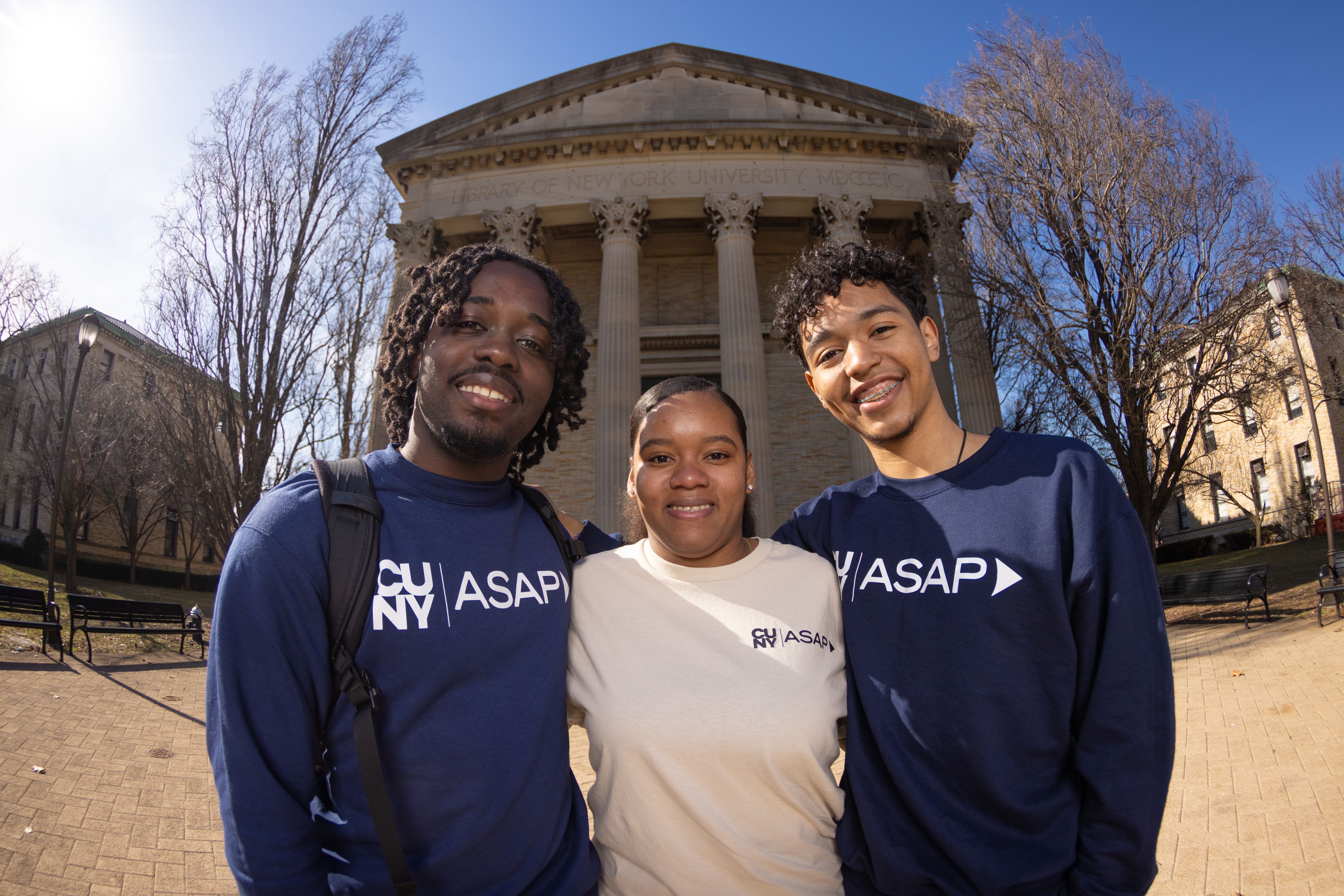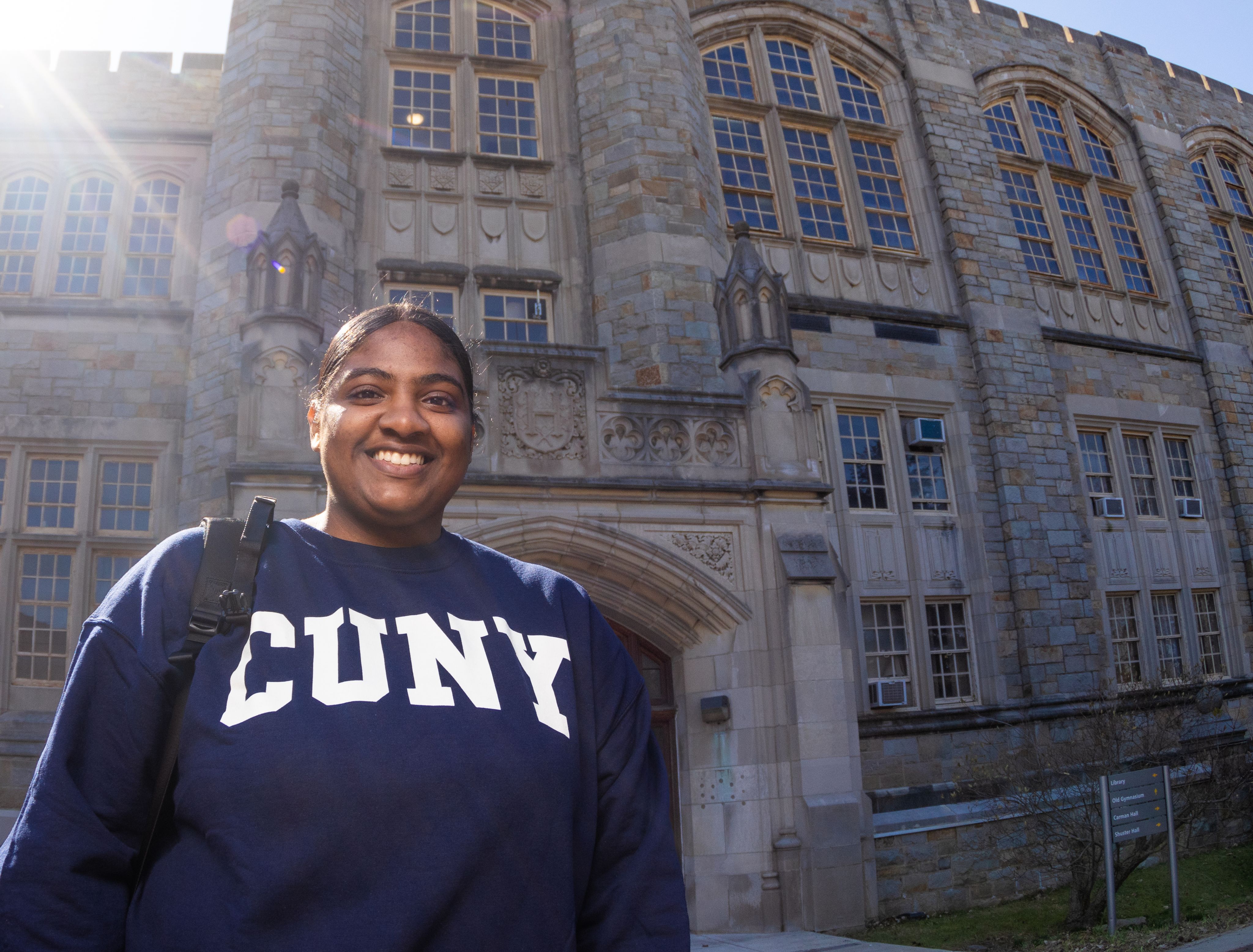CUNY ASAP: A Blueprint for Addressing the College Completion Problem

Year after year, report after report, college completion rates remain worryingly low nationwide. Public belief in the value of higher education is also waning.
Dropout rates for first-time community college students seeking a degree is at around 46 percent. The financial impact of this on students is significant. In the short term, it means that money spent on things like tuition goes to waste. In the long-term, college stopouts have been found to have higher rates of unemployment or make lower wages. They are also far more likely to default on their loans.
Seeking to stem the crisis, in 2007, the City University of New York (CUNY) launched the Accelerated Study in Associate Programs (ASAP) across its campuses. The goal was to help students overcome systemic, personal, and financial barriers to completing a college degree.
By providing students with academic, personal, and financial resources, the ASAP program has successfully doubled college completion rates — a magnitude of improvement rarely seen in student support efforts. With a version of ASAP designed to help bachelor’s degree-seeking students, the program has now proven itself successful in helping students through both the two- and four-year college systems, equipping them with the skills needed to earn degrees or find a place within the workforce.
CUNY ASAP has become a blueprint for institutions seeking to help students achieve their career aspirations, reach their academic goals, and improve their economic standing for themselves and their families.
The Largest Urban University System in the U.S. Was Facing Below-Average Graduation Rates
Prior to 2007, CUNY’s community college graduation rate was concerningly low. The three-year graduation rate for the community colleges in the CUNY system was around 13 percent, which was lower than the average for other urban community colleges, as noted in various case studies and research briefs. “There was a moral imperative to do better by our students,” says Felix V. Matos Rodriguez, CUNY Chancellor.
CUNY also needed to find better ways to reach and attract students from underrepresented backgrounds who might not have otherwise chosen to further their education. This is fundamental to CUNY’s mission to become “a transformative engine of social mobility that is a critical component of the lifeblood of New York City.”
For people like Nateram Chan, college wasn’t necessarily a priority. Chan is a student ambassador and recent ASAP graduate who attended the Borough of Manhattan Community College (BMCC), one of CUNY’s community colleges. “I was hesitant to start college,” explains Chan. “I grew up mostly in a single-parent household, so even the thought of going to college was stressful. The financial burdens that come with attending college were a huge barrier.”
CUNY, together with support from the mayor’s office at the time, set off to design a program to tackle these issues using “a unique combination of urgency, resourcing, and boldness of vision,” says Rodriguez.

Developing a Comprehensive Student Success Program Hyperfocused on Offering Support
CUNY designed a program with a series of wraparound supports, providing students with direct services, financial benefits, and an educational structure that eased the pathway for students to reach their academic goals. A three-year program focused on student success, ASAP was developed with five values in mind: Student-centeredness, integrity, collaboration, effectiveness, and equity.
According to Carey Manifold, interim assistant provost for student success and a former ASAP academic advisor, ASAP stands out from other academic support programs because it offers more comprehensive support to its students. “I think what some of the other programs missed was that you needed to engage with students consistently in order to be able to help support them when they run into challenges,” says Manifold.
The first programs began with a small cohort of just over 1,100 students across the community colleges of the Borough of Manhattan (BMCC), Bronx (BCC), Hostos, Kingsborough, LaGuardia, and Queensborough.
Every ASAP student is assigned an academic advisor with whom they meet regularly. These advisors are there to provide academic, social, and personal support. They’re a student’s guide through the college experience, but are also there to help them plan ahead beyond their degree.
Advisors typically have a caseload of 150 students. They track and monitor their students’ academic progress and engagement within the program to help ensure they are making steady progress towards timely completion. If needed, an advisor will intervene with the necessary support in real time.
Aside from the contact and support they receive from their advisors, students also have access to skilled academic tutors to provide general subject-area support. Advisors keep open lines of communication with both tutors and faculty members to ensure that any students needing additional support get help as soon as possible.
Some ASAP programs also offer spaces for homework assistance, study groups, and review sessions.
Additional emphasis is placed on what happens to ASAP graduates after they complete their courses. Each college has a dedicated career specialist who works with the academic advisors to help students define and work toward achieving their professional and career goals.
The support includes providing skill-building workshops, and informing students about activities that are relevant to their interests and future careers. For example, if a student is pursuing a STEM degree, advisors might suggest they look into campus activities like the competitive Math Team at BMCC or participate in the CUNY Research Scholars Program. ASAP also helps students obtain scholarships, transfer to bachelor’s programs, and prepares them to enter the workforce.
“The emphasis on career development isn’t necessarily just about job placement. It’s about career exposure and support. Ensuring that a student’s career interests are aligned with their academic plan and helping them plot their journey out,” says Rodriguez.
The ASAP program has been found to help students earn higher incomes in their careers post-college. Research has shown how graduates from an ASAP replication program in Ohio earned 11 percent higher wages than their non-ASAP counterparts, in addition to graduating at higher rates.

For Students, Flexibility and Stability Provided Through ASAP Have Been Key to Higher Engagement
The 360-degree services that ASAP provides students have created an environment where students feel safe and supported.
“ASAP helped me break out of my shell. When I started, I was a bit introverted and didn’t put myself out there much.... It opened me up a little bit and helped me feel like I belonged.”
Creating a psychologically safe environment for students means they are more comfortable engaging with learning activities and asking for help or support when needed. They feel more comfortable making mistakes which, in turn, makes it more likely for them to expand their learning experience.
Comprehensive advising has been particularly useful for first-generation students. Prior to joining ASAP, these students would have had little or no exposure to a college experience and could be prone to feeling lost or overwhelmed. Advisors can connect students to resources that ensure they have the tools to navigate and make the most of their college experience.
As a former ASAP advisor, Manifold recalls how the academic advisement system played a prominent role in the program’s success. “[The students] recognized that you genuinely cared about them. Not just how they were doing in class, but how they were doing as people. And I think that really made a difference.”
Financial worries tend to be some of the top stressors impacting student success in college. For students like Chan, ASAP was like “finding a golden ticket.” Eligible students attend college with a tuition and fee gap scholarship to cover cost of attendance after all need-based financial aid is applied, and receive other help to cover out of pocket expenses, such as free public transport cards and assistance with buying textbooks. “It allowed me to focus more on my studies and worry less about the financial side of it,” says Chan.
ASAP works with students to create flexible course schedules that accommodate morning, afternoon, and evening classes offered by their colleges. They’re also encouraged to take classes during winter and summer to ensure they stay on track.
CUNY has also made a concerted effort to build out a community of support for ASAP students. Students have the opportunity to take first-year classes with fellow ASAP students to help them build a network from day one. Additionally, various advising and engagement activities are facilitated by the academic advisors, career specialists, peer mentors, and student ambassadors.

Evolution of ASAP and a Blueprint for Other Colleges
Over 100,000 students have been served by CUNY ASAP since the start of the program. ASAP students show significantly higher graduation rates when compared to their non-ASAP peers — 40.1 percent compared to 21.8 percent. When CUNY launched ASAP, the national graduation rate for urban community college students was 16 percent.
An independent study compared the academic trajectory of ASAP and non-ASAP students. Researchers confirmed that the program was directly responsible for improving academic performance, while also eventually reducing the cost-per-degree for the colleges despite a substantial initial investment.
For Manifold, her time as an advisor showed her the extent of ASAP’s successes beyond the metrics. “Sure, we've been able to graduate significantly more students, and this translates to them being able to get a job that pays a liveable wage. But we’ve also made a difference in terms of how they view the world and how they engage with people.”
“ASAP is one of our spaces for innovation. We have to keep learning from the things that make ASAP a success so that we can expand the number of students that can be served by it.”
CUNY has also launched the Accelerate, Complete, Engage (ACE) program for students looking to pursue a bachelor’s degree. Similar to ASAP, the ACE program has a goal to achieve a minimum four-year graduation rate of 50 percent for first-time freshmen and transfer students with an associate’s degree. The ACE program increased on-time graduation rates of bachelor’s degrees by 12.4 percent — 58.8 percent compared to the control group’s 46.4 percent.
The ASAP model has caught the attention of other higher-education institutions that have reached out to CUNY to learn from or even replicate the program. The program was first replicated by three different community colleges in Ohio in 2014 with success. The replication efforts came about as a collaboration between CUNY, MDRC, and the Ohio Department of Higher Education.
To help meet demand and provide support for institutions and systems seeking to replicate, the CUNY ASAP team launched the ASAP|ACE National Replication Collaborative, a knowledge network dedicated to student completion through the implementation of the ASAP model. Since then, the program has been replicated by nearly 40 colleges across the country, in states including California, Tennessee, West Virginia, North Carolina, and Pennsylvania, as well as a system-wide replication of the model across the State University of New York, with new replications coming online every year.
One college helping their students graduate may not change a national trend, but by scaling successful student completion efforts, such as ACE and ASAP, through partnerships like the National Replication Collaborative, colleges can collectively improve completion rates, the economic outcomes of their students, and ultimately improve public belief in the value of higher education.
Arnold Ventures is a philanthropy that supports research to understand the root causes of America’s most persistent and pressing problems, as well as evidence-based solutions to address them. By focusing on systemic change, AV is working to improve the lives of American families, strengthen their communities, and promote their economic opportunity. Since Laura and John Arnold launched their foundation in 2008, the philanthropy has expanded, and Arnold Ventures’ focus areas include education, criminal justice, health, infrastructure, and public finance, advocating for bipartisan policy reforms that will lead to lasting, scalable change. As signatories of the Giving Pledge, the Arnolds have committed to giving away most of their wealth during their lives.
This content was paid for and created by Arnold Ventures. The editorial staff at The Chronicle had no role in its preparation. Find out more about paid content.




